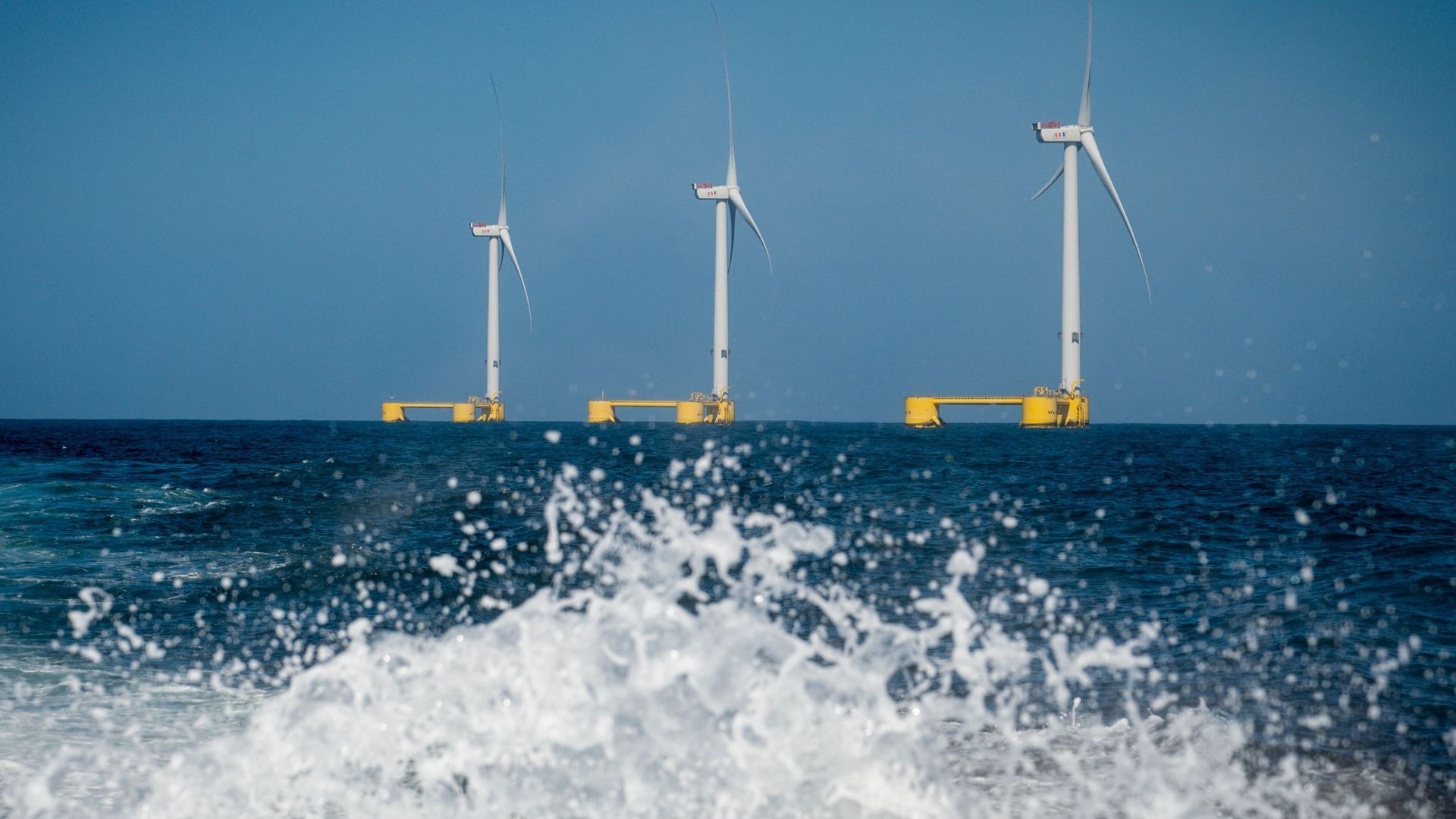
OFFSHORE WIND IS COMING TO THE WEST COAST–WITH EVEN MORE AMBITIOUS TECHNOLOGY.
ENERGY COMPANIES HAVE SECURED LEASES FOR FIVE SITES IN CALIFORNIA–ABOUT 20 MILES OFF THE COAST OF MORRO BAY AND HUMBOLDT COUNTY.
THE TURBINES WILL HAVE FLOATING PLATFORMS TO ACCOMMODATE THE DEEP WATERS, UNLIKE THOSE ALONG THE EAST COAST, WHICH ARE FIXED-BOTTOM TURBINES.
WHILE DEVELOPERS STRUGGLE TO MAKE SOME OF THOSE EAST COAST PROJECTS FINANCIALLY FEASIBLE, THE INDUSTRY IS EVEN MORE AMBITIOUS IN ITS APPROACH TO CALIFORNIA.
FLOATING PLATFORM TURBINES *ARE* CURRENTLY MORE EXPENSIVE THAN THE FIXED-BOTTOM ONES.
THE DEPARTMENT OF ENERGY’S MODELING SHOWS THE AVERAGE COST OF FLOATING WIND ENERGY–WHEN YOU CONSIDER THE ENERGY IT PRODUCES–WILL DECREASE BY 2035, BUT REMAIN HIGHER THAN THAT OF FIXED-BOTTOM OFFSHORE WIND.
THE BIDEN ADMINISTRATION IS TRYING TO REDUCE THE COST BY MORE THAN 70% BY 2035…SCALING UP DOMESTIC MANUFACTURING, DEVELOPING COST-EFFECTIVE TECHNOLOGIES AND MORE.
THERE ARE ALSO OTHER CHALLENGES ASSOCIATED WITH THIS PUSH OFF THE WEST COAST…
INCLUDING THE POTENTIAL IMPACT ON THE ENVIRONMENT, SPECIFICALLY ON MIGRATING WHALES AND OTHER MARINE LIFE. WHILE TURBINES OPERATE IN WATER AROUND THE WORLD, WE DON’T KNOW FOR SURE WHAT THE EFFECTS WILL BE IN THIS PART OF THE PACIFIC. WE’VE REPORTED HEAVILY ON SIMILAR CONCERNS ALONG THE EAST COAST AS WELL AS COMMERCIAL FISHERMEN’S FRUSTRATION WITH SPATIAL RESTRICTIONS.
KEEP IN MIND, WE COULD BE A DECADE AWAY FROM OFFSHORE WIND FARMS ALONG THE WEST COAST PRODUCING ENERGY. THE ENVIRONMENTAL REVIEWS, PERMITTING, AND CONSTRUCTION WILL TAKE YEARS.








